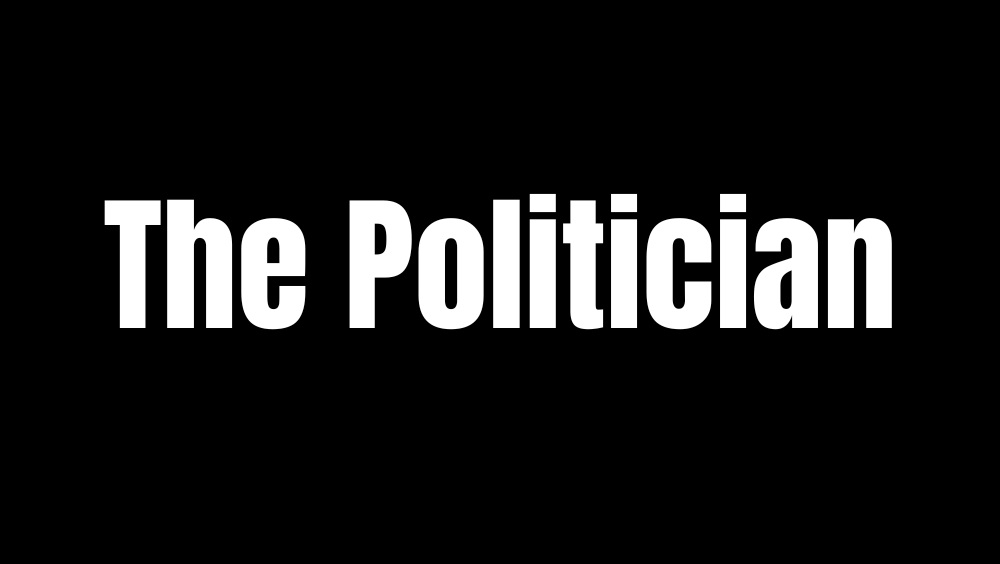‘Nepo Kids’ of Nepal: Read how mass anger against luxury life of children of politicians Vs the abject poverty for common people drove Gen Z protests
Nepal remained under tight restrictions and curfew on Thursday (11th September) after days of violent protests shook the small Himalayan nation. The protests, led largely by Gen Z, have left 31 people dead and more than 600 injured so far. In Kathmandu, the Army asked people to stay indoors after troops came out in large numbers overnight to control the situation. Protesters had set government buildings on fire earlier in the week, which eventually pushed the government to collapse. Authorities also confirmed that around 13,000 prisoners were released from jails across all 77 districts of Nepal during the chaos. On Wednesday (10th September), representatives of the protesters sat down with military officials at the Army headquarters in Kathmandu to discuss who could lead a transitional government. Some voices within the movement backed Sushila Karki, a respected former Chief Justice of Nepal’s Supreme Court, as the interim Prime Minister. Kathmandu’s young mayor, Balen Shah, who is only 35 and was once a rapper before becoming an engineer and politician, has urged protesters to remain calm and wait for an interim administration to take shape. From social media ban to street protests The demonstrations first broke out on Monday, 8th September, after the government briefly banned social media platforms. Police fired into crowds, fueling further fury. By Tuesday, 9th September, the demonstrations had gained pace, and government offices were being attacked by thousands of youths, with buildings were set on fire. The ban itself followed after 26 platforms, such as Facebook, YouTube, and X, failed to register under a new controversial law within a deadline. Nepal’s government has said social media users create fake IDs and use them to spread hate speech and fake news, commit fraud and other crimes on these platforms. A government notice directed the regulator, Nepal Telecommunications Authority, to deactivate unregistered social media but gave no details of which platforms faced action. The services will be restored once the platforms comply with its order. Officials claimed it was meant to stop fake accounts and cybercrimes, but for the youth, it felt like an attack on their voice. The rising trend of #NepoKids But the roots of this protest go deeper than just the ban. Even it started online a weeks ago. Over last few days, a series of videos and tweets erupted on Instagram and other social media under the banner #NepoKids. They featured the kids of senior politicians flaunting their Gucci handbags, private aircraft, and overseas university degrees. Their glamorous lives contrasted starkly with the struggle of poor Nepali families. “Nepobabies live lavishly on the vast sums their corrupt parents steal from taxpayers-hard-earned money sent home through the sweat of migrant labor,” read a post. In Nepal, a hashtag turned into a movement. #NepoKids started trending as young people began calling out the unfair privileges enjoyed by politicians’ children — flaunting Gucci, global degrees, and private jets, while ordinary Nepali youth face joblessness, inequality, and the… pic.twitter.com/ud4ueT7MYQ— India Today Global (@ITGGlobal) September 9, 2025 For some, this tag was more than a trend. It revealed the lifestyle of Nepal’s political class children while living in comfort, compared to the ordinary youth who suffer unemployment and uncertain futures. The anger that built up online soon spilt onto the streets, turning into one of the biggest movements the country has seen in decades. Two worlds, one country On the one hand, the children of influential leaders reside overseas, travelling business class, living in high-rise apartments, and leading lives paid for by the money which belongs to the people of Nepal. Two Nepals, One RealityOn one side, nepo kids enjoying luxury from corrupt money. On the other, ordinary citizens struggling for basic survival.Nepali leaders could take a lesson from Indian politicians—where luxury is often enjoyed in private, while the public sees only a… pic.twitter.com/p65tEFlRBj— BhatkahuaYuva (@BhataktaYuva) September 9, 2025 On the other hand, millions of Nepalis are struggling daily for the fundamentals: affordable education, good healthcare, and secure employment. Young people are leaving the country to work overseas just to be able to sustain their families at home. Screengrab of Instagram post People started sharing videos under hashtags such as #NepoKid #NepoBabies #PoliticiansNepoBabyNepal, questioning whether privilege or personal effort drives politicians’ children’s success. Some are calling for street protests. What began as an online trend has now become the core of a national uprising. The hashtag #NepoKids exposed the lavish lifestyles of political elites' children, revealing a stark contrast to the struggles of ordinary Nepali youth facing unemployment and economic hardship.This… pic.twitter.com/X6B5i



Nepal remained under tight restrictions and curfew on Thursday (11th September) after days of violent protests shook the small Himalayan nation.
The protests, led largely by Gen Z, have left 31 people dead and more than 600 injured so far. In Kathmandu, the Army asked people to stay indoors after troops came out in large numbers overnight to control the situation.
Protesters had set government buildings on fire earlier in the week, which eventually pushed the government to collapse.
Authorities also confirmed that around 13,000 prisoners were released from jails across all 77 districts of Nepal during the chaos.
On Wednesday (10th September), representatives of the protesters sat down with military officials at the Army headquarters in Kathmandu to discuss who could lead a transitional government. Some voices within the movement backed Sushila Karki, a respected former Chief Justice of Nepal’s Supreme Court, as the interim Prime Minister.
Kathmandu’s young mayor, Balen Shah, who is only 35 and was once a rapper before becoming an engineer and politician, has urged protesters to remain calm and wait for an interim administration to take shape.
From social media ban to street protests
The demonstrations first broke out on Monday, 8th September, after the government briefly banned social media platforms. Police fired into crowds, fueling further fury.
By Tuesday, 9th September, the demonstrations had gained pace, and government offices were being attacked by thousands of youths, with buildings were set on fire. The ban itself followed after 26 platforms, such as Facebook, YouTube, and X, failed to register under a new controversial law within a deadline.
Nepal’s government has said social media users create fake IDs and use them to spread hate speech and fake news, commit fraud and other crimes on these platforms. A government notice directed the regulator, Nepal Telecommunications Authority, to deactivate unregistered social media but gave no details of which platforms faced action. The services will be restored once the platforms comply with its order.
Officials claimed it was meant to stop fake accounts and cybercrimes, but for the youth, it felt like an attack on their voice.
The rising trend of #NepoKids
But the roots of this protest go deeper than just the ban. Even it started online a weeks ago. Over last few days, a series of videos and tweets erupted on Instagram and other social media under the banner #NepoKids. They featured the kids of senior politicians flaunting their Gucci handbags, private aircraft, and overseas university degrees. Their glamorous lives contrasted starkly with the struggle of poor Nepali families.
“Nepobabies live lavishly on the vast sums their corrupt parents steal from taxpayers-hard-earned money sent home through the sweat of migrant labor,” read a post.
In Nepal, a hashtag turned into a movement. #NepoKids started trending as young people began calling out the unfair privileges enjoyed by politicians’ children — flaunting Gucci, global degrees, and private jets, while ordinary Nepali youth face joblessness, inequality, and the… pic.twitter.com/ud4ueT7MYQ
— India Today Global (@ITGGlobal) September 9, 2025
For some, this tag was more than a trend. It revealed the lifestyle of Nepal’s political class children while living in comfort, compared to the ordinary youth who suffer unemployment and uncertain futures. The anger that built up online soon spilt onto the streets, turning into one of the biggest movements the country has seen in decades.
Two worlds, one country
On the one hand, the children of influential leaders reside overseas, travelling business class, living in high-rise apartments, and leading lives paid for by the money which belongs to the people of Nepal.
Two Nepals, One Reality
— BhatkahuaYuva (@BhataktaYuva) September 9, 2025
On one side, nepo kids enjoying luxury from corrupt money. On the other, ordinary citizens struggling for basic survival.
Nepali leaders could take a lesson from Indian politicians—where luxury is often enjoyed in private, while the public sees only a… pic.twitter.com/p65tEFlRBj
On the other hand, millions of Nepalis are struggling daily for the fundamentals: affordable education, good healthcare, and secure employment. Young people are leaving the country to work overseas just to be able to sustain their families at home.

People started sharing videos under hashtags such as #NepoKid #NepoBabies #PoliticiansNepoBabyNepal, questioning whether privilege or personal effort drives politicians’ children’s success. Some are calling for street protests.
What began as an online trend has now become the core of a national uprising. The hashtag #NepoKids exposed the lavish lifestyles of political elites' children, revealing a stark contrast to the struggles of ordinary Nepali youth facing unemployment and economic hardship.
— NewsX World (@NewsX) September 10, 2025
This… pic.twitter.com/X6B5iQatpT
The divide became impossible to ignore. For the youth, it was not a matter of jealousy; it was about fairness and survival. How long, they asked, could they watch politicians’ children live in luxury while they fought for the bare minimum?
A generation that refuses to stay silent
This anger did not appear overnight. For years, Nepal’s youth have felt ignored by their leaders. Even past governments, including that of former Prime Minister K.P. Sharma Oli, failed to communicate with the public or deliver on promises. People’s concerns were brushed aside, and promises of reform never turned into reality.
This time, when the government tried to silence them with a social media ban, it backfired. Gen Z, already angry over years of corruption and nepotism, decided enough was enough. They did not just protest against the ban; they made it a voice to end corruption, nepotism, and privilege of the elite.
A protest that transformed Nepal overnight
The hashtag #NepoKids is now the face of this national rebellion. What began as a online debate has become a political earthquake. The demonstrations compelled the Prime Minister and some ministers to resign, showing just how strong people’s rage has become.
With the death count rising and thousands injured, the presence of the Army in Kathmandu demonstrates how grim the situation is. But the movement has already changed Nepal’s political landscape. It has been shown that in today’s digital age, a hashtag can bring down a government, and that a generation once dismissed as “too young” is now leading the fight for a fairer country.
When we look deeply into these protests, there is a simple truth. Nepali youths were not responding to a social media ban. They were responding to decades of discontent, never-ending corruption, politicians who use people’s money like their own, and a political elite whose children parade luxury in foreign lands while ordinary Nepalis fight for the basics back home.This profound rift was finally lashed out at in anger. Tired of being unheard, Gen Z hit the streets, not just over a social media ban, but to demand an end to corruption, nepotism, and elite privilege.























































































































